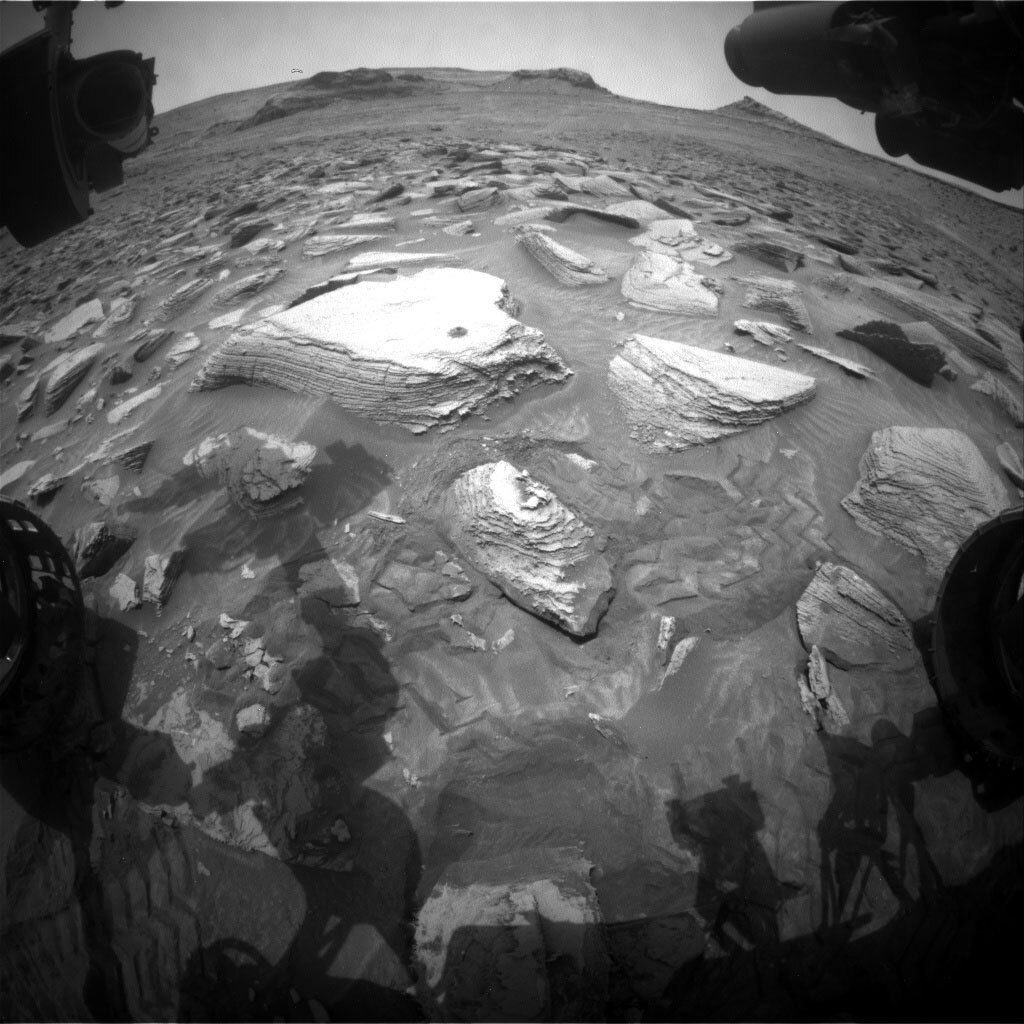3 min read

This week a lot of us have travelled to the team meeting to talk about the most recent science and the path ahead. Those meetings are important to have focused time away from the daily planning routines to take stock and to strategize. But the rover doesn’t get to take a holiday while the team is meeting. So, several of us were online today doing the planning. We were rewarded with a beautiful drill hole number 36 at Canaima! You can just about spot it as the little ‘mole hill’ on the large block in front of the rover. It is a beautiful drill hole that was drilled to full depth. All the worries we had about the rock and its hardness were lifted. Why am I saying this? Well, regular followers of this blog might remember our drill attempt exactly 1500 sols ago (Earth time 16th July 2018) on the target 'Voyageurs' where we found the rock too hard to get enough drill depth for sampling. Here is the blog by my colleague Lauren Edgar, sol 2113 on Mars: Hard as Rock.
With a beautiful drill hole in front of us, and the heap of drill fines pristinely stacked up, in today's planning we are starting with the investigation of the drill hole and the drill fines before preparing for and eventually handing over sample to the instruments in the rover belly, CheMin and SAM. Today, the focus was on the drill fines as they are mobile, should the wind pick up. In today's plan we have the ChemCam RMI imaging of the drill hole, whereby ChemCam takes 13 images sequentially to get the depth of the drill hole in focus along its length. ChemCam also has a LIBS observation on target "Dress Island."
Mastcam is focusing on all the potentially mobile elements in the scenery: change detection imagery on an area where we have left wheel track marks and investigating the drill fines with a multispectral observation. There is another change detection observation right next to the block that Curiosity drilled to see if that drilling had caused any changes in the fines around this block. In addition, Mastcam is looking at target "Normandia" to investigate the sedimentary structures in this area.
Since this is a one-sol plan, tomorrow's team will pick up the next set of observations, working the way from the mobile materials to the rocks, and also to the preparations for sample handover to and the observations with CheMin and SAM, while tosol’s team will get to listen and contribute to the science team meeting. Meanwhile, this blogger will toast to drill hole #36 tonight!
Written by Susanne Schwenzer, Planetary Geologist at The Open University







